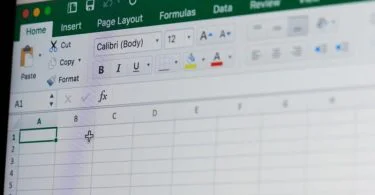While A4 is the international standard, foolscap is more common in the United Kingdom and other Commonwealth nations. The size of an A4 sheet of paper is significantly larger than a foolscap sheet. While foolscap measures 203 mm by 330 mm, A4 paper is 210 mm by 297 mm.
What is A4 Paper?
Paper in the standard size known as A4 measures 210 millimetres by 297 millimetres, equivalent to 8.27 inches by 11.69 inches. This is the standard size of paper in many parts of the world, including Europe, Australia, and Asia. The ISO 216 standard, published for the first time in 1975 and has since been adopted by most countries, includes the paper size known as A4. Documents such as letters, invoices, forms, and reports frequently use the A4 paper size because of its versatility. Additionally, printers and photocopiers frequently make use of it. The versatility of A4 paper allows it to be easily transformed into various formats, including booklets, brochures, and flyers, through folding, cutting, and binding.
Compared to the US Letter size, which measures 8.5 inches by 11 inches, the paper size known as A4 is considerably more compact. Because of this, documents printed on A4 paper may require some minor modification to fit correctly on US Letter paper or vice versa. Generally, A4 paper size is an essential component of day-to-day life. It has a significant impact in various fields, including education, government, and business.
What is Foolscap?
The standard size for foolscap paper is approximately 13.5 inches by 17 inches, which translates to 343 millimetres by 432 millimetres. The traditional watermark on this paper, which featured a jester or fool’s cap, is where the name “foolscap” originates from. Today, we call this type of paper by its original name. Until the middle of the 20th century, foolscap paper was a standard writing medium in the United Kingdom and other parts of the former British Empire. It was used for official paperwork, including legal documents, government records, and other paperwork. It was the standard paper size for official documents in the UK until 1984 when the A4 paper size replaced it.
Foolscap paper was an essential component of the history of paper and significantly impacted the evolution of paper standards and the documentation of essential records and information. As new paper sizes and technologies, such as photocopiers and electronic document management systems, came into use in the middle of the 20th century, there was a gradual shift away from foolscap paper. In modern times, foolscap paper is only occasionally used in contexts that are primarily historical or cultural.
Difference Between A4 Paper and Foolscap
The most widely used paper sizes in various parts of the world are foolscap and A4. While foolscap measures eight by 13 inches (203 by 330 millimetres), A4 paper is only 8.27 by 210 millimetres (mm). A sheet of foolscap paper is noticeably longer than an A4 sheet. The cultural and historical backgrounds of the two paper sizes also distinguish A4 from foolscap. In the Commonwealth, including the United Kingdom and Australia, foolscap paper is more popular than A4 paper. The paper’s watermark, typically depicting a court jester or “fool,” is where the term “foolscap” first appeared.
Printing documents like letters, resumes, and reports on A4 paper is an everyday use case. It is also widely used in classrooms for worksheets and homework. However, foolscap paper has a long history of use in the legal system and is, therefore, commonly associated with contracts, deeds, and wills. Although A4 and foolscap paper are fairly standard in weight and texture, their availability and usefulness in various regions may vary due to physical size and cultural norms.







